Papers by Nihal Arda Akyıldız
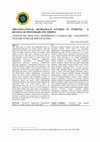
Beykent Üniversitesi Sosyal Bilimler Dergisi, Feb 21, 2024
Abstract This study aims to examine the postgraduate theses on organisational democracy by conten... more Abstract This study aims to examine the postgraduate theses on organisational democracy by content analysis. Forty-one theses from 1993-2023 in the National Thesis Centre of the Council of Higher Education (YOK) were analysed. Most studies in master's theses were conducted in 2022 and in doctoral theses in 2019-2020. It was determined that the most frequently studied variables in master's theses were organisational democracy, organisational organisational commitment; democracy, in organisation, doctoral theses, democracy, democracy, organisational opposition, perception of organisational democracy. It was found that 89,66% of master's theses were quantitative, and 6,90% were mixed method; 75% of doctoral theses were quantitative, and 25% were mixed method. It is understood that Geçkil and Tikici's (2013) Organisational Democracy and Meyer-Allen's (1993) Organisational Commitment Scales were used to measure organisational democracy in master's theses prepared with quantitative method. In doctoral theses, Geçkil and Tikici's (2013) Organisational Democracy, Basım and Şeşen's (2006) Organisational Citizenship Behaviour, and Kassing's (2000) Organisational Opposition Scale were used. Master's theses on organisational democracy (n= 15) were prepared in the public sector, and doctoral theses (n= 6) were prepared as mixed. While 34,48% of the master's theses were prepared in the Departments of Educational Sciences and Business Administration, 58,33% of the doctoral theses were prepared in the Department of Business Administration. The study is expected to provide new perspectives to researchers by revealing the developments in the field of organisational democracy in Turkey.
Keywords: Democracy, Organisation, Organisational Democracy, Content Analysis and Graduate Theses.
Öz
Çalışmada, örgütsel demokrasi konusunda yapılmış olan lisansüstü tezlerin içerik analizi ile incelenmesi amaçlanmıştır. Yükseköğretim Kurulu (YÖK) Ulusal Tez Merkezinde yer alan 1993-2023 yıllarına ait 41 tez analiz edilmiştir. Yüksek lisans tezlerinde en fazla çalışma 2022 yıında, doktora tezlerinde 2019-2020 yıllarında yapılmıştır. Yüksek lisans tezlerinde en sık çalışılan değişkenlerin örgütsel demokrasi, demokrasi, örgüt, örgütsel bağlılık; doktora tezlerinde ise örgütsel demokrasi, demokrasi, örgütsel muhalefet, örgütsel demokrasi algısı olduğu tespit edilmiştir. Yüksek lisans tezlerinin %89,66’sı nicel, %6,90’ı karma yöntemle; doktora tezlerinin %75’i nicel ve %25’i karma yöntemle yapılmıştır. Nicel yöntemle hazırlanan yüksek lisans tezlerinde örgütsel demokrasiyi ölçmek için Geçkil ve Tikici (2013)’nin Örgütsel Demokrasi, MeyerAllen (1993)’ın Örgütsel Bağlılık Ölçeğinin kullanıldığı anlaşılmaktadır. Doktora tezlerinde ise Geçkil ve Tikici (2013)’nin Örgütsel Demokrasi, Basım ve Şeşen (2006)’in Örgütsel Vatandaşlık Davranışı ile Kassing (2000)’in Örgütsel Muhalefet Ölçeğinin kullanıldığı anlaşılmaktadır. Örgütsel demokrasi konulu yüksek lisans tezlerinin (n= 15) kamu sektöründe, doktora tezlerinin ise (n=6) karma olarak hazırlanmıştır. Yüksek lisans tezlerinin %34,48’i Eğitim Bilimleri ve İşletme Anabilim Dalında hazırlanırken doktora tezlerinin %58,33’ü İşletme Anabilim Dalında hazırlanmıştır. Çalışmanın Türkiye’de örgütsel demokrasi alanındaki gelişmeleri ortaya koyarak araştırmacılara yeni bakış açıları kazandırması beklenmektedir.
Anahtar Kelimeler: Demokrasi, Örgüt, Örgütsel Demokrasi, İçerik Analizi ve Lisansüstü Tezler.
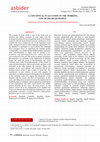
DergiPark (Istanbul University), Dec 17, 2023
The concept of work, which is one of the needs such as nutrition and shelter, continues to exist ... more The concept of work, which is one of the needs such as nutrition and shelter, continues to exist today with the meanings of earning income and gaining status. In developing countries with the modernization process, employment of the disabled has been accepted as one of the important social policy strategies because it offers important opportunities for the disabled to participate in socio-cultural life. Although these strategies focus on supporting the disabled people economically, it is a reality that the disabled people experience many discriminations at stages such as 'getting a job, promotion, wage determination/increase, contract processes and termination of the job'. The recent acceptance of 'positive discrimination' as a principle in the employment of disabled people has made the issues of discrimination and social exclusion more visible for disabled people. In this context, as long as all discrimination, which is universally accepted, is not prevented in the labor markets, the corrosive effects will continue in the socio-cultural and economic life of the disabled person trying to gain a place in social life. The introduction of new policies in line with equality of opportunity by making forward-looking plans for the disabled in the economic sense will support the integration of the disabled with the society and their self-realization. In this sense, providing some measures to ensure the employment of disabled people in workplaces and to support the sustainability of this employment will make social benefit and welfare policies possible. In this sense, the study focuses on the policies carried out in the employment of the disabled and focuses on solutions that will enable the disabled to have equal opportunities to produce, to realize themselves independently and thus to have a voice in social life.

DergiPark (Istanbul University), Jun 28, 2020
Especially the health, social and economic developments and changes in the last century; caused a... more Especially the health, social and economic developments and changes in the last century; caused a decrease in fertility rate and prolonged life expectancy at birth. These results have changed the demographic structure of the countries with significant increases in the elderly population rate in the world and brought countries to a new set of difficulties. The search for solutions has led to the development of healthy aging policies and the concept of active aging has been developed by the World Health Organization (WHO). Being aware of the fact that the policies and strategies carried out for the aging population will not be realized without planning urban spaces, WHO has launched the 'Age-Friendly Cities' project, which aims to increase the participation level and quality of life of the elderly, the disabled and all other individuals, by taking the urban design along with architecture into the agenda. The study, which deals with active aging, which is accepted worldwide, is an important need for sustainable age-friendly cities of 'accessibility' and 'design for all' principles that increase the level of participation in social, cultural and economic life as well as the access of elderly people who live in cities to urban spaces. aims to reveal that. In this context, the study has been produced from the author's doctoral dissertation to contribute to more livable, sustainable urban arrangements that aim to eliminate the obstacles and constraints faced in the participation of ages by social studies along with literature researches.

Sosyal Politika Çalışmaları Dergisi
Rapid ageing all over the world is changing the population rates and social structure of the soci... more Rapid ageing all over the world is changing the population rates and social structure of the society. The change causes some structural transformations in family structures and social life as well as demographic structures of countries. The subject has been handled by experts in many aspects and theories and approaches to old age have been produced. The 'decline in functional capacity', which starts to decrease as the individual gets older, is the remarkable problem of old age. Social, environmental and economic factors, as well as physical factors, affect the lives of the older persons, and the 'capacity range for maintaining function', which is high in adulthood, opens with old age, thus 'functional capacity' decreases. "Active ageing", which is one of the theories of ageing, reveals the increase in physical limitations/inadequacies as ageing individuals get older because they do not have a homogenous group. The approach also emphasises the 'c...
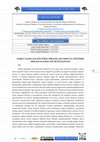
Avrasya Uluslararası Araştırmalar Dergisi
Köklü geçmişiyle tüm dünyada önemli bir yere sahip olan Anadolu toprakları, somut miras değerleri... more Köklü geçmişiyle tüm dünyada önemli bir yere sahip olan Anadolu toprakları, somut miras değerleri kadar somut olmayan miras değerleri açısından da zengin bir geçmişe sahiptir. Somut ve somut olmayan kültürel mirasın bir bütün olarak ele alınarak değerlendirilmesi, mimari ve kültürel değerlerin gelecek nesillere doğru bir şekilde aktarılabilmesine imkan tanımaktadır. Kültürel miras toplumları, yaşam alışkanlıkları, toplumsal bellek, gelenek ve göreneklere ilişkin bilgi birikimi ile temsil etmenin yanı sıra sosyal hayatı ve mekânları da biçimlendire gelmektedir. Toplumların sahip oldukları kültürel mirası koruma eylemleri, hem somut kültürel miras hem de somut olmayan kültürel miras bağlamında gerçekleştirildiğinde bir bütünü ifade etmektedir. Bu anlamda en iyi örneklerden biri olan Edirne’de somut kültürel miras korunumu adına 125 yıllık geçmişiyle koruma altına alınarak restorasyon ve restitüsyon çalışmaları ile Edirne’ye kazandırılan Necmi İğe Konağı’dır. Bu kültürel mirasın yenide...
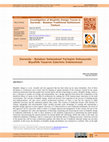
Kent Akademisi, 2021
Biyofilik tasarım, pek çok disiplin tarafından ele alınan yeni, çok yönlü ve zengin bir yaklaşımd... more Biyofilik tasarım, pek çok disiplin tarafından ele alınan yeni, çok yönlü ve zengin bir yaklaşımdır. Bu disiplinlerden biri de mimarlık olup, insanın doğaya ve doğada bulunan canlılara karşı hissettiği doğuştan gelen içgüdüsel/duygusal bağın yarattığı yakınlığın mekânsal talepleri biçimlendirmesiyle ilgilenmektedir. Ekoloji ve sürdürülebilirlik konularıyla ilgili çalışmalara da referans olan biyofilik tasarım, yapılı çevrelerde insan-doğa etkileşiminden istifade ederek mimarlık alanında doğanın yararlı etkilerinin sürdürülmesine imkân sağlayan bir tasarım anlayışına sahiptir. Yapı tasarımı ve uygulamaları sürecinde giderek daha önemli hâle gelen biyofilik tasarım anlayışı, yalnızca kentlerin modern mimari yapılarını değil; geleneksel yapılar ve bunların oluşturduğu yerleşim dokularını da şekillendirme kapasitesine sahiptir. Geleneksel dokuların iklim, topografya ve çevresel değerlerin referans alınarak oluşturulması, aslında bu bölgelerde biyofilik tasarım anlayışının yaratılmasında...

Sosyal Politika Çalışmaları Dergisi, 2018
İnsanoğlunun en temel ihtiyaçlarından biri barınma ihtiyacıdır. Barınma, mekânsal tasarıma ilham ... more İnsanoğlunun en temel ihtiyaçlarından biri barınma ihtiyacıdır. Barınma, mekânsal tasarıma ilham vermeye devam ederken, eş zamanlı olarak özellikle afet gibi sıra dışı durumlarda daha da büyük önem arz eden, insanın psikolojik, sosyal ve gündelik yaşamına doğrudan veya dolaylı etkileyen bir olgudur. Bu nedenle de afet sonucunda ortaya çıkan acil barınma ihtiyacı; hem ülkeler için kritik bir önem taşırken, hem de bilimsel çalışmalara konu olmaktadır. Bu ve benzeri durumlarda ortaya çıkan barınma ihtiyacı en çok duyarlı grupları (yaşlılar, engelliler ve kadınlar) etkilemektedir. Bu nedenle de ortaya çıkacak farklı çözüm önerileri ve bunların uygulanabilir hale getirilmesi devletin sosyal kimliği bakımından büyük önem taşımaktadır. Dünya literatürüne bakıldığında, özellikle depremler konusunda oldukça büyük mağduriyetler yaşamış ülkelerin başında gelen Japonya’nın toplumun duyarlı kesimleri için hızlı ve farklı çözümleri olduğu görülmektedir. Bu çalışma kapsamında, bir afet (deprem gi...
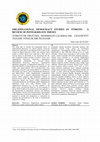
This study aims to examine the postgraduate theses on organisational democracy by content analysi... more This study aims to examine the postgraduate theses on organisational democracy by content analysis. Forty-one theses from 1993-2023 in the National Thesis Centre of the Council of Higher Education (YOK) were analysed. Most studies in master's theses were conducted in 2022 and in doctoral theses in 2019-2020. It was determined that the most frequently studied variables in master's theses were organisational democracy, democracy, organisation, organisational commitment; in doctoral theses, organisational democracy, democracy, organisational opposition, perception of organisational democracy. It was found that 89,66% of master's theses were quantitative, and 6,90% were mixed method; 75% of doctoral theses were quantitative, and 25% were mixed method. It is understood that Geçkil and Tikici's (2013) Organisational Democracy and Meyer-Allen's (1993) Organisational Commitment Scales were used to measure organisational democracy in master's theses prepared with quantitative method. In doctoral theses, Geçkil and Tikici's (2013) Organisational Democracy, Basım and Şeşen's (2006) Organisational Citizenship Behaviour, and Kassing's (2000) Organisational Opposition Scale were used. Master's theses on organisational democracy (n= 15) were prepared in the public sector, and doctoral theses (n= 6) were prepared as mixed. While 34,48% of the master's theses were prepared in the Departments of Educational Sciences and Business Administration, 58,33% of the doctoral theses were prepared in the Department of Business Administration. The study is expected to provide new perspectives to researchers by revealing the developments in the field of organisational democracy in Turkey. Çalışmada, örgütsel demokrasi konusunda yapılmış olan lisansüstü tezlerin içerik analizi ile incelenmesi amaçlanmıştır. Yükseköğretim Kurulu (YÖK) Ulusal Tez Merkezinde yer alan 1993-2023 yıllarına ait 41 tez analiz edilmiştir. Yüksek lisans tezlerinde en fazla çalışma 2022 yıında, doktora tezlerinde 2019-2020 yıllarında yapılmıştır. Yüksek lisans tezlerinde en sık çalışılan değişkenlerin örgütsel demokrasi, demokrasi, örgüt, örgütsel bağlılık; doktora tezlerinde ise örgütsel demokrasi, demokrasi, örgütsel muhalefet, örgütsel demokrasi algısı olduğu tespit edilmiştir. Yüksek lisans tezlerinin %89,66'sı nicel, %6,90'ı karma yöntemle; doktora tezlerinin %75'i nicel ve %25'i karma yöntemle yapılmıştır. Nicel yöntemle hazırlanan yüksek lisans tezlerinde örgütsel demokrasiyi ölçmek için Geçkil ve Tikici (2013)'nin Örgütsel Demokrasi, Meyer-Allen (1993)'ın Örgütsel Bağlılık Ölçeğinin kullanıldığı anlaşılmaktadır. Doktora tezlerinde ise Geçkil ve Tikici (2013)'nin Örgütsel Demokrasi, Basım ve Şeşen (2006)'in Örgütsel Vatandaşlık Davranışı ile Kassing (2000)'in Örgütsel Muhalefet Ölçeğinin kullanıldığı anlaşılmaktadır. Örgütsel demokrasi konulu yüksek lisans tezlerinin (n= 15) kamu sektöründe, doktora tezlerinin ise (n=6) karma olarak hazırlanmıştır. Yüksek lisans tezlerinin %34,48'i Eğitim Bilimleri ve İşletme Anabilim Dalında hazırlanırken doktora tezlerinin %58,33'ü İşletme Anabilim Dalında hazırlanmıştır. Çalışmanın Türkiye'de örgütsel demokrasi alanındaki gelişmeleri ortaya koyarak araştırmacılara yeni bakış açıları kazandırması beklenmektedir.
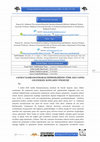
6 ŞUBAT KAHRAMANMARAŞ DEPREMLERİNDE TÜRK AİLE YAPISI: GELENEKSEL KODLARIN YÜKSELİŞİ , 2024
Abstract
On February 6, 2023, two major earthquakes in Kahramanmaraş created devastating effects.... more Abstract
On February 6, 2023, two major earthquakes in Kahramanmaraş created devastating effects. This study aims to analyze the changes in the family structure of the earthquake victims as well as their reasons for not leaving their settlement areas. Case study was selected as the research design and face-to-face (n=22) and remote (n=8) semi-structured interviews were conducted with 30 earthquake victims in the earthquake zone. The two main themes identified are "reproduction of traditional codes through disasters: from the nuclear family to the extended family?" and "the Turkish family as a prominent institution in establishing spatial belonging". The first finding revealed the earthquake experience strengthened the sense of solidarity and family ties, exhibiting an appearance similar to the process of transition from nuclear family structure to extended family structure. The other finding revealed spatial belonging, attachment to the land, and the fact that the land is a source of livelihood as reasons not to leave the settlement area. In addition to the capacity of the Turkish family structure to rapidly evolve into one that resembles extended family with the spirit of solidarity, the study revealed the earthquake victims’ attachment to the land with their sense of belonging and their preference not to give up traditional production systems. Although the study does not have a general validity or permanence claim, it is thought to contribute to the literature.
Keywords: Turkish family structure, family ties, effects of disasters on family ties, extended family, nuclear family.
Öz
6 Şubat 2023 tarihli Kahramanmaraş merkezli iki büyük deprem yıkıcı etkiler yaratmıştır. Bu çalışmanın amacı, depremzedelerin aile yapılarındaki değişimin yanı sıra, yerleşim bölgelerinden ayrıl(a)mama nedenlerini analiz etmeye çalışmaktır. Araştırma deseni olarak durum çalışmasının seçildiği araştırmada deprem bölgesinde 30 depremzedeyle yüz yüze (s=22) ve uzaktan (s=8) yarı-yapılandırılmış görüşmeler gerçekleştirilmiştir. “Afetlerin geleneksel kodları yeniden üretimi: Çekirdek aileden geniş aileye dönüş mü?” ve “mekânsal aidiyetin kurulmasında öne çıkan bir kurum olarak Türk ailesi” şeklinde iki ana tema belirlenmiştir. Çalışmanın ilk bulgusu; deprem deneyimi sonrasında dayanışma ve yardımlaşma duygusunun aile bağlarını güçlendirdiğini ve birkaç kuşağı bir araya getirerek çekirdek aile yapısından geniş aile yapısına geçiş sürecine benzer bir görünüm sergilediğini ortaya çıkarmıştır. İkinci bulgu ise mekân aidiyeti, toprağa bağlılık, toprağın geçim kaynağı oluşu ve güçlü Türk aile bağları gibi nedenlerle yerleşim alanını terk etmeme yönündeki tercihleri açığa çıkarmıştır. Çalışma, Türk aile yapısının dayanışma ruhuyla hızlıca geniş aileyi andıran bir görünüme evrilme kapasitesinin yanı sıra, depremzedelerin aidiyet duygularıyla toprağa bağlılık ve geleneksel üretim sistemlerinden de vazgeçmeme tercihlerini ortaya koymuştur. Çalışmanın genel geçerlik veya kalıcılık iddiası bulunmamakla birlikte literatüre katkı sağlayacağı düşünülmektedir.
Anahtar Kelimeler: Türk aile yapısı, aile bağları, afetin aile bağlarına etkisi, geniş aile, çekirdek aile
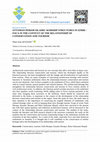
ArtGRID - Journal of Architecture Engineering and Fine Arts
Architectural conservation and tourism are two concepts that affect each other in many ways. The ... more Architectural conservation and tourism are two concepts that affect each other in many ways. The relationship between conservation and tourism, which has developed rapidly in the historical process, has been strengthened with the change and diversification of expectations from tourism. There are many examples of associating architectural heritage with touristic functions in Anatolian settlements where the relationship between conservation and tourism can be seen intensely. One of these examples is the settlement of Foca, which draws attention with its coastal tourism, natural qualities and cultural features. The architectural heritage that strengthens the relationship between conservation and tourism in Foca consists mostly of civil architectural works. In addition, the Ottoman period worship structures in the settlement also have qualities worth examining. While adding value to Foca's tourism potential; at the same time, bringing these structures to the forefront, which should ...
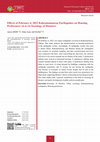
Journal of Economy Culture and Society, 2024
On February 6, 2023, two major earthquakes occurred in Kahramanmaraş, Türkiye. This study analyze... more On February 6, 2023, two major earthquakes occurred in Kahramanmaraş, Türkiye. This study analyzes the transformations in housing preferences of the earthquake victims. Accordingly, 30 earthquake victims who were in Adana, Hatay, Kahramanmaraş, and Malatya during the earthquakes were reached via snowball sampling, and then semistructured interviews were conducted with them. After transcribing the interviews, the software ATLAS.ti 9 was used to identify the five themes of the study: 1) preferences shifting from vertical to horizontal housing, 2) preferences shifting from comfort-oriented options to those with safety, 3) preferences shifting from urban to rural areas, 4) rising demand for buildings complying with the earthquake legislation, and 5) reasons for not leaving the earthquake zone because of economic or family reasons despite lack of trust in the building/area. The findings revealed that safety needs were prioritized over other needs, supporting Maslow's theory of hierarchical structuring of needs. This study might make a general contribution to the field of sociology of disasters and guide development of public policies postdisaster.
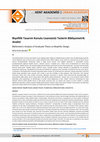
Kent Akademisi
Son yıllarda popüler bir kavram olan biyofili, insanın doğuştan gelen ‘doğaya ve doğada bulunan c... more Son yıllarda popüler bir kavram olan biyofili, insanın doğuştan gelen ‘doğaya ve doğada bulunan canlılara’ karşı hissettiği duygusal yakınlık, mimari bağlamda yapılı çevrelerde insan ve doğa etkileşimini ifade ederken doğanın yararlı etkilerinin sürdürülmesine de olanak tanıyan tasarımı tanımlanmaktadır. Günümüzde ekoloji ve doğal çevreyi koruma, insan sağlığını destekleme ve sürdürülebilir tasarımı gerçekleştirmedeki değeriyle biyofilik tasarım / iyileştirici tasarım / terapötik çevre, modern mimari stratejilerinden biri olarak kabul görmektedir. Biyofilik tasarım, tüm dünyada olduğu gibi ülkemizdeki araştırmalara da konu olmaya başlamıştır. Lisansüstü tezlerde biyofilik tasarıma karşılık gelen “biyofilik mimari, iyileştiren mimari, terapötik mimari” anahtar kelimeleri ile yapılan çalışmalar taranmıştır. Çalışma için tarama, Yükseköğretim Kurulu Ulusal Tez Merkezi’nde “gelişmiş arama” bölümünde “tümünde (tez adı, özet, konu, dizin)”, “içinde geçsin” şeklinde sözdizimleri kullanılar...
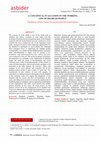
A Conceptual Evaluation on the Working Life of Disabled People, 2024
The concept of work, which is one of the needs such as nutrition and shelter, continues to exist ... more The concept of work, which is one of the needs such as nutrition and shelter, continues to exist today with the meanings of earning income and gaining status. In developing countries with the modernization process, employment of the disabled has been accepted as one of the important social policy strategies because it offers important opportunities for the disabled to participate in socio-cultural life. Although these strategies focus on supporting the disabled people economically, it is a reality that the disabled people experience many discriminations at stages such as 'getting a job, promotion, wage determination/increase, contract processes and termination of the job'. The recent acceptance of 'positive discrimination' as a principle in the employment of disabled people has made the issues of discrimination and social exclusion more visible for disabled people. In this context, as long as all discrimination, which is universally accepted, is not prevented in the labor markets, the corrosive effects will continue in the socio-cultural and economic life of the disabled person trying to gain a place in social life. The introduction of new policies in line with equality of opportunity by making forward-looking plans for the disabled in the economic sense will support the integration of the disabled with the society and their self-realization. In this sense, providing some measures to ensure the employment of disabled people in workplaces and to support the sustainability of this employment will make social benefit and welfare policies possible. In this sense, the study focuses on the policies carried out in the employment of the disabled and focuses on solutions that will enable the disabled to have equal opportunities to produce, to realize themselves independently and thus to have a voice in social life.
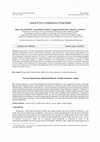
Turkish Journal of Science and Technology
Design studios, one of the most important components of architectural education had to move to di... more Design studios, one of the most important components of architectural education had to move to digital environments urgently and independent of space with the Covid-19 pandemic. This study aims to evaluate whether design studios can be digitized according to the views of students and instructors in two different architecture schools (Firat and Balikesir University) by considering this compulsory experience. The views of 71 students and 5 academicians were taken with a purposeful sampling method. Content and descriptive analyses were performed on the views collected from the participants. As a result, the biggest problem in moving design studios to a digital environment is the disappearance of physical environments in which collaboration, idea sharing, and discussions will occur. In addition, the advantages of online education continued their attraction for some students in the digitalization of design studios. In terms of instructors, games, simulations, modeling, and virtual realit...
Kent Terimleri Ansiklopedisi, 2023
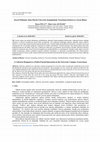
Fırat Üniversitesi Müh. Bil. Dergisi , 2019
Cafeterias, planned as an alternative spatial arrangement for social life, make an important cont... more Cafeterias, planned as an alternative spatial arrangement for social life, make an important contribution to the social life through the interaction and communication environments. The geography of every society, the demands of daily life, the cafes shaped depending on the cultural and social structure are indispensable parts of our social life at every level of our social life for almost every age group with open and closed alternatives. The cafeterias, which are the subject of our study, have been studied and applied for the campus of Firat University because of their capacity to closely affect the social life of the young age group with many cultures, ethnicities and thoughts in the university campuses. In the campus, it is aimed to contribute to the subject with the project presentation which will be able to meet the demands of the campus users.

SOSYAL POLITIKA ÇALIŞMALARI DERGISI, 2023
Rapid ageing all over the world is changing the population rates and social structure of the soci... more Rapid ageing all over the world is changing the population rates and social structure of the society. The change causes some structural transformations in family structures and social life as well as demographic structures of countries. The subject has been handled by experts in many aspects and theories and approaches to old age have been produced. The 'decline in functional capacity' , which starts to decrease as the individual gets older, is the remarkable problem of old age. Social, environmental and economic factors, as well as physical factors, affect the lives of the older persons, and the 'capacity range for maintaining function', which is high in adulthood, opens with old age, thus 'functional capacity' decreases. "Active ageing", which is one of the theories of ageing, reveals the increase in physical limitations / inadequacies as ageing individuals get older because they do not have a homogenous group. The approach also emphasises the 'capacity of the urban environment to support active ageing' in order to enable a healthy and active life course. Through the study, which is produced from the author's doctoral thesis, it is aimed to reveal the contributions of arrangements such as universal design and accessibility that support active ageing to a more livable urban physical environment and social life.
Key Words: Ageing, Theories of Ageing, Active Ageing, Accessibility, Universal Design.
Özet
Tüm dünyada yaşanan hızlı yaşlanma, toplumun nüfus oranlarını ve sosyal yapıyı değiştirmektedir. Değişim, ülkelerin demografik yapıları kadar aile yapılarını ve toplumsal hayatta da bir takım yapısal dönüşümlere neden olmaktadır. Konu pek çok yönüyle uzmanlar tarafından ele alınarak yaşlılık kuramları ve yaklaşımları üretilmiştir. Bireyin yaş aldıkça da azalmaya başlayan ‘işlev kapasitesinin düşüşü’ yaşlılığın dikkat çekici sorunudur. Fiziksel faktörler kadar sosyal, çevresel ve ekonomik faktörler de yaş alanların yaşamlarını etkilemekte, yetişkinlik döneminde yüksek olan ‘fonksiyonun sürdürülebilme kapasite aralığı’ yaşlılıkla birlikte açılmakta böylece ‘işlevsel kapasite’ de düşmektedir. Yaşlılık kuramlarından olan “aktif yaşlanma”, yaş alan bireylerin homojen bir gruba sahip olmamaları nedeniyle yaş aldıkça fiziksel kısıtlama/yetersizliklerindeki artışı ortaya koymaktadır. Yaklaşım, yaşam sürecinin sağlıklı ve faal geçirilmesini mümkün kılmak üzere, kentsel çevrenin de ‘aktif yaşlanmayı destekleme kapasitesini’ önemsenmektedir. Yazarın doktora tezinden üretilen çalışma aracılığıyla aktif yaşlanmayı destekleyen evrensel tasarım ve erişebilirlik gibi düzenlemelerin, daha yaşanır kentsel fiziki çevreye ve toplumsal yaşama sunduğu katkıların ortaya konması hedeflenmiştir.
Anahtar Kelimeler: Yaşlanma, Yaşlılık Kuramları, Aktif Yaşlanma, Erişebilirlik, Evrensel Tasarım.
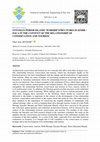
Journal of Architecture, Engineering & Fine Arts, 2023
Architectural conservation and tourism are two concepts that affect each other in many ways. The ... more Architectural conservation and tourism are two concepts that affect each other in many ways. The relationship between conservation and tourism, which has developed rapidly in the historical process, has been strengthened with the change and diversification of expectations from tourism. There are many examples of associating architectural heritage with touristic functions in Anatolian settlements where the relationship between conservation and tourism can be seen intensely. One of these examples is the settlement of Foca, which draws attention with its coastal tourism, natural qualities and cultural features. The architectural heritage that strengthens the relationship between conservation and tourism in Foca consists mostly of civil architectural works. In addition, the Ottoman period worship structures in the settlement also have qualities worth examining. While adding value to Foca's tourism potential; at the same time, bringing these structures to the forefront, which should be conserved and delivered to the future, is important in the context of the development of the relationship between conservation and tourism in the region. From this point of view, the study aims to draw attention to the importance of conserving the original elements of settlements with cultural heritage value, as well as keeping them alive through tourism. Scope of work; Fatih Mosque, Kayalar Mosque and Hafız Suleyman Masjid, which have survived to the present day with their spatial qualities and traditional architectural features, will be discussed in the context of the relationship between conservation and tourism. The method of the study, besides the literature and field research related to the structures examined; the study on the qualities that the conservation and tourism relationship brings to the settlements includes the evaluation of the data together. As a result of the study, especially Foca and other historical settlements in Anatolia; it is thought that it will contribute to the conservation of similar heritage and to the development of its relationship with tourism.
Keywords: Conservation, tourism, Fatih Mosque, Kayalar Mosque, Hafız Suleyman Masjid.
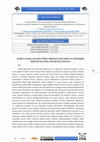
Avrasya Uluslararası Araştırmalar Dergisi , 2023
Köklü geçmişiyle tüm dünyada önemli bir yere sahip olan Anadolu toprakları, somut miras değerleri... more Köklü geçmişiyle tüm dünyada önemli bir yere sahip olan Anadolu toprakları, somut miras değerleri kadar somut olmayan miras değerleri açısından da zengin bir geçmişe sahiptir. Somut ve somut olmayan kültürel mirasın bir bütün olarak ele alınarak değerlendirilmesi, mimari ve kültürel değerlerin gelecek nesillere doğru bir şekilde aktarılabilmesine imkan tanımaktadır. Kültürel miras, toplumun yaşam alışkanlıkları, toplumsal bellek, gelenek ve göreneklere ilişkin bilgi birikimiyle temsil etmekte ve sosyal hayatı, ortak mekânları da biçimlendire gelmektedir. Toplumların sahip oldukları kültürel mirası koruma eylemleri, hem somut kültürel miras hem de somut olmayan kültürel miras bağlamında gerçekleştirildiğinde bir bütünü ifade etmektedir. Bu anlamda en iyi örneklerden biri, Edirne’de somut kültürel mirasın korunması bağlamında 125 yıllık geçmişiyle restorasyon/restitüsyon çalışmalarıyla koruma altına alınarak Edirne’ye kazandırılan Necmi İğe Konağı’dır. Bu kültürel mirasın yeniden işlevlendirme ile müzeye dönüştürülmesindeki asıl amaç, yörenin somut olmayan kültürel mirasının korunmasına katkı sağlayarak gelecek kuşaklara yörenin geleneksel değerlerini aktarma görevinin üstlenilmesidir. Bu amaçla düzenlenen konakta yerleşimin gelenek, görenek ve adetlerinin konağın her bir köşesinde mumya heykellerle canlandırıldığı, sinevizyon gösterisiyle birlikte somut olmayan kültürel miras birikiminin özgün özellikleri ve geçmişini anlatan görsel sunumlar ile kültürel değerlerin geçmişini anlatan bilgilendirme panoları da yer almaktadır. Her köşesi geçmiş dönemin günlük yaşam alışkanlıklarına, halk kültürüne dair ipuçlarını sergiler nitelikte olan bu tarihi konakta, bölgenin düğün kültürü, örf ve adetleri, el sanatlarını içeren somut olmayan kültürel miras birikimi sergilenmektedir. Kültürel miras örneklerinden olan evliliğe hazırlık süreçlerine ilişkin (kız isteme, çeyiz hazırlığı, geline kurşun dökme, damat tıraşı, düğün yemeği hazırlığı, yöresel gelin - damat düğün kıyafetleri, kına gecesi, imam nikahı, zifaf vb.) adet ve gelenekleri, yöresel el sanatlarından aynalı süpürge, Talikacılık, Edirnekari sanatlarının tanıtımının yanı sıra Rumeli - Balkanlara ait yöresel kıyafetler de konağın farklı alanlarında sergilenmektedir. Konak Edirne’nin sahip olduğu somut kültürel miras birikimi olarak kabul edilen tarihi yapı stoğu içinde yer almakta olup, yapının korunma ve yeniden işlevlendirilme kararıyla yörenin yaşam kültürü, sosyal hayatı, gelenek- görenekleri gibi somut olmayan kültürel miras değerlerini gelecek nesillere aktarma konusunda kente kattı sunmak üzere düzenlenmiştir. Buradan hareketle çalışma, yöreye ait kültürel miras koruma çalışmaları, Necmi İğe Konağı ile ilgili literatür taramaları, saha incelemelerinin yanı sıra somut olmayan kültürel miras birikimi ile ilgili olarak yerli halkla görüşmeler ve alan araştırmaları aracılığıyla gerçekleştirilmiştir. Yapılan çalışma ile bu tarihi mekânın, yöreye ait somut olmayan kültürel mirasın korunmasına ve gelecek kuşaklara aktarılması için kültürel sürdürülebilirliğe sunduğu katkıyı ortaya koymayı hedeflenmektedir. Bu anlamda çalışmanın diğer kentlerde yapılacak olan kültürel mirasın korunma uygulamalarına da rehberlik edebileceği düşünülmektedir.
Anahtar Kelimeler: Kültürel miras, somut olmayan kültürel miras (SOKÜM), koruma, Edirne-Necmi İğe Konağı.
NECMİ İĞE MANSION AS A SPACE OF TRANSMISSION AND DISPLAY OF INTANGIBLE CULTURAL HERITAGE
Abstract
Anatolian lands, which have an important place in the world with their long-established history, have a rich history in terms of intangible heritage values as well as tangible heritage values. The evaluation of tangible and intangible cultural heritage by considering it as a whole allows the architectural and cultural values to be accurately transferred to future generations. Cultural heritage represents the living habits of the society, social memory, knowledge of traditions and customs, and shapes social life and common spaces. The actions of societies to protect cultural heritage represent a whole when they are carried out in the context of both tangible cultural heritage and intangible cultural heritage. One of the best examples in this sense is the Necmi Ige Mansion, which was brought to Edirne with restoration and restitution works by being protected with its 125-year history in the name of the protection of tangible cultural heritage in Edirne. The main purpose of transforming this cultural heritage into a museum through re-functioning is to undertake the task of transferring the traditional values of the region to future generations by contributing to the protection of the intangible cultural heritage of the region. In the mansion organized for this purpose, there are visual presentations describing the unique features and history of intangible cultural heritage accumulation and information boards describing the history of cultural values together with the cinevision show, where the traditions, customs and customs of the settlement are animated with mummy sculptures in each corner of the mansion. In this historical mansion, which exhibits clues about the daily life habits and folk culture of the past period, intangible cultural heritage including the wedding culture, customs and customs of the region and handicrafts is exhibited. The customs and traditions related to the preparation processes for marriage (asking for girls, dowry preparation, pouring bullets into the bride, groom shaving, wedding dinner preparation, local bride-groom wedding clothes, henna night, imam wedding, victory, etc.), mirrored broom from local handicrafts, ‘Talikacılık’ and ‘Edirnekari arts’, as well as the local clothes of the Rumelia-Balkans are exhibited in different areas of the mansion. It is located in the historical building stock, which is accepted as the accumulation of tangible cultural heritage owned by Edirne, and has been arranged to present the intangible cultural heritage values such as the life culture, social life, traditions and traditions of the region to the future generations with the preservation and re-functioning decision of the building. From this point of view, the study was carried out through local cultural heritage conservation, literature reviews related to Necmi Ige Mansion, field studies, as well as interviews with indigenous people and field research on intangible cultural heritage accumulation. With this study, it aims to reveal the contribution of this historical place to the preservation of the intangible cultural heritage of the region and to the cultural sustainability in order to transfer it to future generations. In this sense, it is thought that the study can also guide the practices of cultural heritage conservation in other cities.
Keywords: Cultural heritage, intangible cultural heritage, conservation, Edirne-Necmi Ige Mansion.

Uploads
Papers by Nihal Arda Akyıldız
Keywords: Democracy, Organisation, Organisational Democracy, Content Analysis and Graduate Theses.
Öz
Çalışmada, örgütsel demokrasi konusunda yapılmış olan lisansüstü tezlerin içerik analizi ile incelenmesi amaçlanmıştır. Yükseköğretim Kurulu (YÖK) Ulusal Tez Merkezinde yer alan 1993-2023 yıllarına ait 41 tez analiz edilmiştir. Yüksek lisans tezlerinde en fazla çalışma 2022 yıında, doktora tezlerinde 2019-2020 yıllarında yapılmıştır. Yüksek lisans tezlerinde en sık çalışılan değişkenlerin örgütsel demokrasi, demokrasi, örgüt, örgütsel bağlılık; doktora tezlerinde ise örgütsel demokrasi, demokrasi, örgütsel muhalefet, örgütsel demokrasi algısı olduğu tespit edilmiştir. Yüksek lisans tezlerinin %89,66’sı nicel, %6,90’ı karma yöntemle; doktora tezlerinin %75’i nicel ve %25’i karma yöntemle yapılmıştır. Nicel yöntemle hazırlanan yüksek lisans tezlerinde örgütsel demokrasiyi ölçmek için Geçkil ve Tikici (2013)’nin Örgütsel Demokrasi, MeyerAllen (1993)’ın Örgütsel Bağlılık Ölçeğinin kullanıldığı anlaşılmaktadır. Doktora tezlerinde ise Geçkil ve Tikici (2013)’nin Örgütsel Demokrasi, Basım ve Şeşen (2006)’in Örgütsel Vatandaşlık Davranışı ile Kassing (2000)’in Örgütsel Muhalefet Ölçeğinin kullanıldığı anlaşılmaktadır. Örgütsel demokrasi konulu yüksek lisans tezlerinin (n= 15) kamu sektöründe, doktora tezlerinin ise (n=6) karma olarak hazırlanmıştır. Yüksek lisans tezlerinin %34,48’i Eğitim Bilimleri ve İşletme Anabilim Dalında hazırlanırken doktora tezlerinin %58,33’ü İşletme Anabilim Dalında hazırlanmıştır. Çalışmanın Türkiye’de örgütsel demokrasi alanındaki gelişmeleri ortaya koyarak araştırmacılara yeni bakış açıları kazandırması beklenmektedir.
Anahtar Kelimeler: Demokrasi, Örgüt, Örgütsel Demokrasi, İçerik Analizi ve Lisansüstü Tezler.
On February 6, 2023, two major earthquakes in Kahramanmaraş created devastating effects. This study aims to analyze the changes in the family structure of the earthquake victims as well as their reasons for not leaving their settlement areas. Case study was selected as the research design and face-to-face (n=22) and remote (n=8) semi-structured interviews were conducted with 30 earthquake victims in the earthquake zone. The two main themes identified are "reproduction of traditional codes through disasters: from the nuclear family to the extended family?" and "the Turkish family as a prominent institution in establishing spatial belonging". The first finding revealed the earthquake experience strengthened the sense of solidarity and family ties, exhibiting an appearance similar to the process of transition from nuclear family structure to extended family structure. The other finding revealed spatial belonging, attachment to the land, and the fact that the land is a source of livelihood as reasons not to leave the settlement area. In addition to the capacity of the Turkish family structure to rapidly evolve into one that resembles extended family with the spirit of solidarity, the study revealed the earthquake victims’ attachment to the land with their sense of belonging and their preference not to give up traditional production systems. Although the study does not have a general validity or permanence claim, it is thought to contribute to the literature.
Keywords: Turkish family structure, family ties, effects of disasters on family ties, extended family, nuclear family.
Öz
6 Şubat 2023 tarihli Kahramanmaraş merkezli iki büyük deprem yıkıcı etkiler yaratmıştır. Bu çalışmanın amacı, depremzedelerin aile yapılarındaki değişimin yanı sıra, yerleşim bölgelerinden ayrıl(a)mama nedenlerini analiz etmeye çalışmaktır. Araştırma deseni olarak durum çalışmasının seçildiği araştırmada deprem bölgesinde 30 depremzedeyle yüz yüze (s=22) ve uzaktan (s=8) yarı-yapılandırılmış görüşmeler gerçekleştirilmiştir. “Afetlerin geleneksel kodları yeniden üretimi: Çekirdek aileden geniş aileye dönüş mü?” ve “mekânsal aidiyetin kurulmasında öne çıkan bir kurum olarak Türk ailesi” şeklinde iki ana tema belirlenmiştir. Çalışmanın ilk bulgusu; deprem deneyimi sonrasında dayanışma ve yardımlaşma duygusunun aile bağlarını güçlendirdiğini ve birkaç kuşağı bir araya getirerek çekirdek aile yapısından geniş aile yapısına geçiş sürecine benzer bir görünüm sergilediğini ortaya çıkarmıştır. İkinci bulgu ise mekân aidiyeti, toprağa bağlılık, toprağın geçim kaynağı oluşu ve güçlü Türk aile bağları gibi nedenlerle yerleşim alanını terk etmeme yönündeki tercihleri açığa çıkarmıştır. Çalışma, Türk aile yapısının dayanışma ruhuyla hızlıca geniş aileyi andıran bir görünüme evrilme kapasitesinin yanı sıra, depremzedelerin aidiyet duygularıyla toprağa bağlılık ve geleneksel üretim sistemlerinden de vazgeçmeme tercihlerini ortaya koymuştur. Çalışmanın genel geçerlik veya kalıcılık iddiası bulunmamakla birlikte literatüre katkı sağlayacağı düşünülmektedir.
Anahtar Kelimeler: Türk aile yapısı, aile bağları, afetin aile bağlarına etkisi, geniş aile, çekirdek aile
Key Words: Ageing, Theories of Ageing, Active Ageing, Accessibility, Universal Design.
Özet
Tüm dünyada yaşanan hızlı yaşlanma, toplumun nüfus oranlarını ve sosyal yapıyı değiştirmektedir. Değişim, ülkelerin demografik yapıları kadar aile yapılarını ve toplumsal hayatta da bir takım yapısal dönüşümlere neden olmaktadır. Konu pek çok yönüyle uzmanlar tarafından ele alınarak yaşlılık kuramları ve yaklaşımları üretilmiştir. Bireyin yaş aldıkça da azalmaya başlayan ‘işlev kapasitesinin düşüşü’ yaşlılığın dikkat çekici sorunudur. Fiziksel faktörler kadar sosyal, çevresel ve ekonomik faktörler de yaş alanların yaşamlarını etkilemekte, yetişkinlik döneminde yüksek olan ‘fonksiyonun sürdürülebilme kapasite aralığı’ yaşlılıkla birlikte açılmakta böylece ‘işlevsel kapasite’ de düşmektedir. Yaşlılık kuramlarından olan “aktif yaşlanma”, yaş alan bireylerin homojen bir gruba sahip olmamaları nedeniyle yaş aldıkça fiziksel kısıtlama/yetersizliklerindeki artışı ortaya koymaktadır. Yaklaşım, yaşam sürecinin sağlıklı ve faal geçirilmesini mümkün kılmak üzere, kentsel çevrenin de ‘aktif yaşlanmayı destekleme kapasitesini’ önemsenmektedir. Yazarın doktora tezinden üretilen çalışma aracılığıyla aktif yaşlanmayı destekleyen evrensel tasarım ve erişebilirlik gibi düzenlemelerin, daha yaşanır kentsel fiziki çevreye ve toplumsal yaşama sunduğu katkıların ortaya konması hedeflenmiştir.
Anahtar Kelimeler: Yaşlanma, Yaşlılık Kuramları, Aktif Yaşlanma, Erişebilirlik, Evrensel Tasarım.
Keywords: Conservation, tourism, Fatih Mosque, Kayalar Mosque, Hafız Suleyman Masjid.
Anahtar Kelimeler: Kültürel miras, somut olmayan kültürel miras (SOKÜM), koruma, Edirne-Necmi İğe Konağı.
NECMİ İĞE MANSION AS A SPACE OF TRANSMISSION AND DISPLAY OF INTANGIBLE CULTURAL HERITAGE
Abstract
Anatolian lands, which have an important place in the world with their long-established history, have a rich history in terms of intangible heritage values as well as tangible heritage values. The evaluation of tangible and intangible cultural heritage by considering it as a whole allows the architectural and cultural values to be accurately transferred to future generations. Cultural heritage represents the living habits of the society, social memory, knowledge of traditions and customs, and shapes social life and common spaces. The actions of societies to protect cultural heritage represent a whole when they are carried out in the context of both tangible cultural heritage and intangible cultural heritage. One of the best examples in this sense is the Necmi Ige Mansion, which was brought to Edirne with restoration and restitution works by being protected with its 125-year history in the name of the protection of tangible cultural heritage in Edirne. The main purpose of transforming this cultural heritage into a museum through re-functioning is to undertake the task of transferring the traditional values of the region to future generations by contributing to the protection of the intangible cultural heritage of the region. In the mansion organized for this purpose, there are visual presentations describing the unique features and history of intangible cultural heritage accumulation and information boards describing the history of cultural values together with the cinevision show, where the traditions, customs and customs of the settlement are animated with mummy sculptures in each corner of the mansion. In this historical mansion, which exhibits clues about the daily life habits and folk culture of the past period, intangible cultural heritage including the wedding culture, customs and customs of the region and handicrafts is exhibited. The customs and traditions related to the preparation processes for marriage (asking for girls, dowry preparation, pouring bullets into the bride, groom shaving, wedding dinner preparation, local bride-groom wedding clothes, henna night, imam wedding, victory, etc.), mirrored broom from local handicrafts, ‘Talikacılık’ and ‘Edirnekari arts’, as well as the local clothes of the Rumelia-Balkans are exhibited in different areas of the mansion. It is located in the historical building stock, which is accepted as the accumulation of tangible cultural heritage owned by Edirne, and has been arranged to present the intangible cultural heritage values such as the life culture, social life, traditions and traditions of the region to the future generations with the preservation and re-functioning decision of the building. From this point of view, the study was carried out through local cultural heritage conservation, literature reviews related to Necmi Ige Mansion, field studies, as well as interviews with indigenous people and field research on intangible cultural heritage accumulation. With this study, it aims to reveal the contribution of this historical place to the preservation of the intangible cultural heritage of the region and to the cultural sustainability in order to transfer it to future generations. In this sense, it is thought that the study can also guide the practices of cultural heritage conservation in other cities.
Keywords: Cultural heritage, intangible cultural heritage, conservation, Edirne-Necmi Ige Mansion.
Keywords: Democracy, Organisation, Organisational Democracy, Content Analysis and Graduate Theses.
Öz
Çalışmada, örgütsel demokrasi konusunda yapılmış olan lisansüstü tezlerin içerik analizi ile incelenmesi amaçlanmıştır. Yükseköğretim Kurulu (YÖK) Ulusal Tez Merkezinde yer alan 1993-2023 yıllarına ait 41 tez analiz edilmiştir. Yüksek lisans tezlerinde en fazla çalışma 2022 yıında, doktora tezlerinde 2019-2020 yıllarında yapılmıştır. Yüksek lisans tezlerinde en sık çalışılan değişkenlerin örgütsel demokrasi, demokrasi, örgüt, örgütsel bağlılık; doktora tezlerinde ise örgütsel demokrasi, demokrasi, örgütsel muhalefet, örgütsel demokrasi algısı olduğu tespit edilmiştir. Yüksek lisans tezlerinin %89,66’sı nicel, %6,90’ı karma yöntemle; doktora tezlerinin %75’i nicel ve %25’i karma yöntemle yapılmıştır. Nicel yöntemle hazırlanan yüksek lisans tezlerinde örgütsel demokrasiyi ölçmek için Geçkil ve Tikici (2013)’nin Örgütsel Demokrasi, MeyerAllen (1993)’ın Örgütsel Bağlılık Ölçeğinin kullanıldığı anlaşılmaktadır. Doktora tezlerinde ise Geçkil ve Tikici (2013)’nin Örgütsel Demokrasi, Basım ve Şeşen (2006)’in Örgütsel Vatandaşlık Davranışı ile Kassing (2000)’in Örgütsel Muhalefet Ölçeğinin kullanıldığı anlaşılmaktadır. Örgütsel demokrasi konulu yüksek lisans tezlerinin (n= 15) kamu sektöründe, doktora tezlerinin ise (n=6) karma olarak hazırlanmıştır. Yüksek lisans tezlerinin %34,48’i Eğitim Bilimleri ve İşletme Anabilim Dalında hazırlanırken doktora tezlerinin %58,33’ü İşletme Anabilim Dalında hazırlanmıştır. Çalışmanın Türkiye’de örgütsel demokrasi alanındaki gelişmeleri ortaya koyarak araştırmacılara yeni bakış açıları kazandırması beklenmektedir.
Anahtar Kelimeler: Demokrasi, Örgüt, Örgütsel Demokrasi, İçerik Analizi ve Lisansüstü Tezler.
On February 6, 2023, two major earthquakes in Kahramanmaraş created devastating effects. This study aims to analyze the changes in the family structure of the earthquake victims as well as their reasons for not leaving their settlement areas. Case study was selected as the research design and face-to-face (n=22) and remote (n=8) semi-structured interviews were conducted with 30 earthquake victims in the earthquake zone. The two main themes identified are "reproduction of traditional codes through disasters: from the nuclear family to the extended family?" and "the Turkish family as a prominent institution in establishing spatial belonging". The first finding revealed the earthquake experience strengthened the sense of solidarity and family ties, exhibiting an appearance similar to the process of transition from nuclear family structure to extended family structure. The other finding revealed spatial belonging, attachment to the land, and the fact that the land is a source of livelihood as reasons not to leave the settlement area. In addition to the capacity of the Turkish family structure to rapidly evolve into one that resembles extended family with the spirit of solidarity, the study revealed the earthquake victims’ attachment to the land with their sense of belonging and their preference not to give up traditional production systems. Although the study does not have a general validity or permanence claim, it is thought to contribute to the literature.
Keywords: Turkish family structure, family ties, effects of disasters on family ties, extended family, nuclear family.
Öz
6 Şubat 2023 tarihli Kahramanmaraş merkezli iki büyük deprem yıkıcı etkiler yaratmıştır. Bu çalışmanın amacı, depremzedelerin aile yapılarındaki değişimin yanı sıra, yerleşim bölgelerinden ayrıl(a)mama nedenlerini analiz etmeye çalışmaktır. Araştırma deseni olarak durum çalışmasının seçildiği araştırmada deprem bölgesinde 30 depremzedeyle yüz yüze (s=22) ve uzaktan (s=8) yarı-yapılandırılmış görüşmeler gerçekleştirilmiştir. “Afetlerin geleneksel kodları yeniden üretimi: Çekirdek aileden geniş aileye dönüş mü?” ve “mekânsal aidiyetin kurulmasında öne çıkan bir kurum olarak Türk ailesi” şeklinde iki ana tema belirlenmiştir. Çalışmanın ilk bulgusu; deprem deneyimi sonrasında dayanışma ve yardımlaşma duygusunun aile bağlarını güçlendirdiğini ve birkaç kuşağı bir araya getirerek çekirdek aile yapısından geniş aile yapısına geçiş sürecine benzer bir görünüm sergilediğini ortaya çıkarmıştır. İkinci bulgu ise mekân aidiyeti, toprağa bağlılık, toprağın geçim kaynağı oluşu ve güçlü Türk aile bağları gibi nedenlerle yerleşim alanını terk etmeme yönündeki tercihleri açığa çıkarmıştır. Çalışma, Türk aile yapısının dayanışma ruhuyla hızlıca geniş aileyi andıran bir görünüme evrilme kapasitesinin yanı sıra, depremzedelerin aidiyet duygularıyla toprağa bağlılık ve geleneksel üretim sistemlerinden de vazgeçmeme tercihlerini ortaya koymuştur. Çalışmanın genel geçerlik veya kalıcılık iddiası bulunmamakla birlikte literatüre katkı sağlayacağı düşünülmektedir.
Anahtar Kelimeler: Türk aile yapısı, aile bağları, afetin aile bağlarına etkisi, geniş aile, çekirdek aile
Key Words: Ageing, Theories of Ageing, Active Ageing, Accessibility, Universal Design.
Özet
Tüm dünyada yaşanan hızlı yaşlanma, toplumun nüfus oranlarını ve sosyal yapıyı değiştirmektedir. Değişim, ülkelerin demografik yapıları kadar aile yapılarını ve toplumsal hayatta da bir takım yapısal dönüşümlere neden olmaktadır. Konu pek çok yönüyle uzmanlar tarafından ele alınarak yaşlılık kuramları ve yaklaşımları üretilmiştir. Bireyin yaş aldıkça da azalmaya başlayan ‘işlev kapasitesinin düşüşü’ yaşlılığın dikkat çekici sorunudur. Fiziksel faktörler kadar sosyal, çevresel ve ekonomik faktörler de yaş alanların yaşamlarını etkilemekte, yetişkinlik döneminde yüksek olan ‘fonksiyonun sürdürülebilme kapasite aralığı’ yaşlılıkla birlikte açılmakta böylece ‘işlevsel kapasite’ de düşmektedir. Yaşlılık kuramlarından olan “aktif yaşlanma”, yaş alan bireylerin homojen bir gruba sahip olmamaları nedeniyle yaş aldıkça fiziksel kısıtlama/yetersizliklerindeki artışı ortaya koymaktadır. Yaklaşım, yaşam sürecinin sağlıklı ve faal geçirilmesini mümkün kılmak üzere, kentsel çevrenin de ‘aktif yaşlanmayı destekleme kapasitesini’ önemsenmektedir. Yazarın doktora tezinden üretilen çalışma aracılığıyla aktif yaşlanmayı destekleyen evrensel tasarım ve erişebilirlik gibi düzenlemelerin, daha yaşanır kentsel fiziki çevreye ve toplumsal yaşama sunduğu katkıların ortaya konması hedeflenmiştir.
Anahtar Kelimeler: Yaşlanma, Yaşlılık Kuramları, Aktif Yaşlanma, Erişebilirlik, Evrensel Tasarım.
Keywords: Conservation, tourism, Fatih Mosque, Kayalar Mosque, Hafız Suleyman Masjid.
Anahtar Kelimeler: Kültürel miras, somut olmayan kültürel miras (SOKÜM), koruma, Edirne-Necmi İğe Konağı.
NECMİ İĞE MANSION AS A SPACE OF TRANSMISSION AND DISPLAY OF INTANGIBLE CULTURAL HERITAGE
Abstract
Anatolian lands, which have an important place in the world with their long-established history, have a rich history in terms of intangible heritage values as well as tangible heritage values. The evaluation of tangible and intangible cultural heritage by considering it as a whole allows the architectural and cultural values to be accurately transferred to future generations. Cultural heritage represents the living habits of the society, social memory, knowledge of traditions and customs, and shapes social life and common spaces. The actions of societies to protect cultural heritage represent a whole when they are carried out in the context of both tangible cultural heritage and intangible cultural heritage. One of the best examples in this sense is the Necmi Ige Mansion, which was brought to Edirne with restoration and restitution works by being protected with its 125-year history in the name of the protection of tangible cultural heritage in Edirne. The main purpose of transforming this cultural heritage into a museum through re-functioning is to undertake the task of transferring the traditional values of the region to future generations by contributing to the protection of the intangible cultural heritage of the region. In the mansion organized for this purpose, there are visual presentations describing the unique features and history of intangible cultural heritage accumulation and information boards describing the history of cultural values together with the cinevision show, where the traditions, customs and customs of the settlement are animated with mummy sculptures in each corner of the mansion. In this historical mansion, which exhibits clues about the daily life habits and folk culture of the past period, intangible cultural heritage including the wedding culture, customs and customs of the region and handicrafts is exhibited. The customs and traditions related to the preparation processes for marriage (asking for girls, dowry preparation, pouring bullets into the bride, groom shaving, wedding dinner preparation, local bride-groom wedding clothes, henna night, imam wedding, victory, etc.), mirrored broom from local handicrafts, ‘Talikacılık’ and ‘Edirnekari arts’, as well as the local clothes of the Rumelia-Balkans are exhibited in different areas of the mansion. It is located in the historical building stock, which is accepted as the accumulation of tangible cultural heritage owned by Edirne, and has been arranged to present the intangible cultural heritage values such as the life culture, social life, traditions and traditions of the region to the future generations with the preservation and re-functioning decision of the building. From this point of view, the study was carried out through local cultural heritage conservation, literature reviews related to Necmi Ige Mansion, field studies, as well as interviews with indigenous people and field research on intangible cultural heritage accumulation. With this study, it aims to reveal the contribution of this historical place to the preservation of the intangible cultural heritage of the region and to the cultural sustainability in order to transfer it to future generations. In this sense, it is thought that the study can also guide the practices of cultural heritage conservation in other cities.
Keywords: Cultural heritage, intangible cultural heritage, conservation, Edirne-Necmi Ige Mansion.
Çalışma daha sürdürülebilir kent arzusunda olan akıllı kent uygulamaları aracılığıyla, gelecekte üniversite yerleşke ulaşım planlamalarında akıllı ulaşım sistemleri ve teknolojilerinin sağlayacağı enerji kazanımı, erişebilir eğitim imkânları, etkin zaman yönetimi ve sosyo-kültürel yaşama sunulacak desteklere odaklanmaktadır. Bu bağlamda Balıkesir Üniversitesi Çağış Yerleşkesi yaya yolları ulaşım ağının mevcut durumu analiz edilerek, karşılaşılan sorunlar ve bunlar için planlanan çözüm uygulamaları ‘Akıllı Ulaşım Sistemleri’ perspektifiyle ele alınmıştır. Çalışmanın Balıkesir şehir içi ulaşımındaki uygulamalara ve akıllı kent uygulamalarına destek sunarak, sağlayacağı kazanımlarla yerel yönetimler için de önemli bir strateji önerisi sunması hedeflenmektedir.
Anahtar Kelimeler: Akıllı Kent, Akıllı Ulaşım Sistemleri, Üniversite Yerleşkeleri, Balıkesir Üniversitesi.
Monumental structures have been at the forefront of the most important representatives of cultural heritage since the concept of conservation in architecture began to develop in its current form. The plan schemes, facade qualities, materials and construction techniques of these buildings, where many important rituals about people and society are performed, are
also unique to them. However, each monumental building can reflect all the values in question in its architectural design by being shaped according to the tradition/custom, belief value, lifestyle and celebration / festival / rituals of the society in which it is located. In this context, the aim of the study is to determine the intangible cultural heritage values that are heavily traced in monumental structures and to contribute to holistic protection by revealing their effects on architectural qualities. Within the scope of the study, first of all, the concepts of monumental building and intangible cultural heritage were transferred by examining various sources. Many overlapping points of these concepts are emphasized. In this context, various monumental building examples from different parts of the world and from Turkey have been compared with each other according to their functions and evaluated in terms of intangible cultural heritage characteristics. With the data obtained, first of all, the spatial
formations of the buildings with different functions according to the intangible cultural heritage were revealed; However, the different places of monuments with the same function in different geographies according to their intangible cultural heritage characteristics are discussed. In this context, it has been revealed that intangible cultural heritage greatly affects the spatial formation of monumental structures. As a result of the study, it was pointed out that it is vital to consider intangible cultural heritage values for the protection of monumental structures.
Architectural heritage includes information about design and construction such as plan, facade, materials and construction techniques; It also contains data on many intangible cultural heritage values, such as the culture of living and use inside the buildings, the shaping of the plan scheme according to this culture and also the crafts depending on the way of production, the design of the facade features to reflect the understanding of art and built environment of the period. From this point of view, the aim of the study is to reveal the intangible cultural heritage values that the architectural works contain as tangible cultural
heritage and to draw attention to the necessity of protecting the said heritage in all aspects. Within the scope of the study, various examples in which the relationship between architectural and intangible cultural heritage values are clearly seen in various parts of the world and Anatolia are discussed. The method of the study is primarily scanning the literature
on cultural and architectural heritage; At the same time, the examples where this heritage can be observed are researched through relevant sources and evaluated by observing on site. In addition to this, legal studies developed for the protection of architectural heritage in the
world and in Turkey have also been examined and the points that refer to the necessity of preserving intangible cultural heritage are especially discussed. As a result, it is thought that the study will contribute to the holistic preservation of architectural values, which are the common heritage of the whole world, together with the intangible cultural heritage they contain.
with freehand drawings. On the other hand, it has been seen that the desired success can be achieved with hybrid education supported by distance education process for 3rd and 4th-grade students who
have command of computer programs. According to the results of the student survey in which the experienced period and the experienced process were questioned; It has been concluded that there is no harm in switching the theoretical courses other than the project and design courses to the hybrid system where distance education is provided. It is thought that arranging hybrid design education applications according to student levels will not protect creativity and interaction in design courses,
and if necessary, theoretical courses can be provided with a formation education that allows distance education.
Keywords: Design, design course, attitude towards distance education
Conserving the traditional textures, which are the cultural heritage sites of the city, and keeping them alive through tourism; respect for the common values of the society, commitment to identity and belonging, makes it possible to keep the past cultures alive with heritage values. To be able to deal with the cultural environments of these areas with tourism value in a balanced and sensitive manner without disturbing them; it will contribute to sustainable development by supporting both these settlements and the cities they are connected to socially, culturally, historically and economically. In this context, the aim of the study is to draw attention to the effects of conserving the original elements of traditional settlements and keeping them alive through tourism. Scope of work; Harput traditional settlement area, which has reached today with its spatial qualities, streets and traditional architectural structures, has been discussed in the context of the relationship between conservation and tourism. In this sense, as a method, both regarding the concepts of conservation and tourism; in addition, the literature on Harput was examined and the data obtained from field studies were evaluated together. It is thought that with the suggestions listed at the end of the study, together with today's alternative and creative tourism approaches, it will contribute to the conservation and sustainable development of all traditional settlements in Turkey and in the world, especially in Harput.
Keywords: Conservation, Tourism, Traditional Settlements, Harput
tasarım ve düzenlemelerinin biçimlendirilmesi şeklinde olmuştur. Önceleri temel ihtiyaçlarınkarşılandığı küçük ve işlevsel konut olarak tasarlanırken, daha sonra sosyalleşmeyle birlikte; bireylerin rahatı, zevki, estetik duygusu ve konfora olan düşkünlüğüne koşut biçimde şekillenmeye başlamıştır. Ekonomik yapı, toplumsal statü ve refah seviyesine göre; planların formları, üretim yapı malzemeleri, mekânların büyüklükleri ve çeşitleri de artmıştır. Çalışma kapsamında yaşanangelişmelerin, toplumları sadece kültür, ekonomi ve sosyal boyutlarda değil, yaşamları vezihinleri biçimlendiren mekân tasarım süreci ve mekân üretme biçimleri açısından dadönüştürerek evirilmesini sağladığı ortaya konacaktır. Bu tarihlerden sonra değişen yaşamşartları ve insanların değişen ihtiyaç ve gereksinimlerine göre biçimlenen mekânların toplumsalyapıda yarattığı değişimler ele alınacaktır.
Anahtar Kelimeler: Mekân Anlayışı, Sosyal Hayat, Toplumsal Yapı, Mimari Özellikler
Kamusal Alanlar.
THE APPROACH OF THE SPACE EVOLUTION BY SOCIAL LIFE
As the biggest characteristics of societies; the common historical and cultural values, their similarities to the geography and climatic conditions, their religious beliefs, moral structures and their common ethical values shaped by their world views have been explained by the elements that make up socio-economic differences. Since the beginning of social life, it has been seen that due to the differences of European and Asian cultural elements, different social developments have been experienced. Cultural, socio-economic structure that changes with their effects; social structure and spatial design processes have caused differences. Throughout the historical process, it has transformed human beings to produce knowledge and transfer it to the new generations, to live civilization and social processes and to continue the construction of social life to this day. Space designs to meet the need for housing, it has been in the form of shaping urban housing and urban space design and arrangements with the developing and changing social life which started with residential buildings. I designed it as a small and functional housing where basic needs were met, then with socialization; It has taken shape under the comfort, taste, aesthetic sense of the individuals and the devotion to comfort. According to economic structure, social status and welfare level; forms of the plans, production building materials, the size and types of spaces increased. It will be revealed that the developments experienced within the study not only transform the societies in terms of culture, economy and social dimension but also their transformation by transforming them in terms of the space design process and space production forms shaping lives and minds. After these dates, the changing living conditions and the changes in the social structure of the spaces formed according to the changing needs and needs of people will be discussed.
Keywords: Space Concept, Social Life, Social Structure, Architectural Features, Public Spaces
Anahtar Kelimeler: Engelli Politikaları, Sosyal Politikalar, Engellilere Sağlanan Haklar.
RIGHTS PROVIDED TO DISABLED IN TURKEY
Located in the Constitution of the Republic of Turkey "social state", "social security rights" and "in particular need to be protected in terms of social security" arrangements relating to constitute the basis of the constitutional guarantee maintenance. For this reason, arrangements have been made to ensure the equality of opportunity for the problem-free living of social life, in order to ensure the legal arrangements in which all disadvantaged citizens are surrounded. In this study, all the training that the disabled in Turkey, cultural, economic and social rights were held to ensure the enjoyment of policies that will provide equal opportunities to obtain rights together with the realization. These topics will be briefly discussed, such as environmental architecture, transportation, private vehicle, education, culture, employment, retirement and social support.
Key Words: Disabled Policies, Social Policies, Rights Provided to the Disabled
güvenlik bakımından özel olarak korunması gerekenler” ile ilgili düzenlemeler bakım güvencesinin Anayasal temelini oluşturmaktadır. Diğer taraftan, 5378 sayılı Kanun özürlülerin bakım ve sosyal güvenliğine ilişkin sorunlarının çözümünü amaçlamakta ve bu çerçevede bu gruba dönük olarak bir bakım güvence sistemi oluşturulmasını öngörmektedir. Bu çalışmada; Aile ve Sosyal Politikalar Bakanlığı (ASPB) kurulana kadarki döneme ilişkin Türkiye’de engellilere yönelik izlenmekte olan politikalar, ana hatlarıyla çok detaylandırılmadan ele alınarak incelenmeye gayret gösterilmiştir.
Anahtar Kelimeler: Yapı Malzemesi, Sürdürülebilirlik, Kerpiç
Geçmişin izlerini bünyesinde barındıran kentlerde yer alan geleneksel yerleşimler, kimi durumlarda kentin bir bölgesinde, ayrı hâlde kalmaktadır. Kimi durumlarda ise kentin kalbi olarak nitelendirilebilecek bir bölgede bulunabilmekte ve kent, bu bölgenin çevresinde gelişebilmektedir. Her iki durumda da geleneksel yerleşim alanlarının, yeni gelişen kent bölgeleriyle ilişkilerinde gerek mimari, gerekse sosyal anlamda pek çok sorunla karşılaşılmaktadır. Söz konusu sorunların aşılabildiği ölçüde kentler; sürdürülebilir bir şekilde planlanarak gelecek nesillere, geçmişin izlerini de taşıyarak aktarılabilmektedir.
Bu çalışmanın amacı, sürdürülebilir mimarlık çerçevesinde, geleneksel yerleşimlerin içinde yer aldıkları kentlerle ilişkisini irdeleyerek; bu bağlamda korunmalarına katkı koymaktır. Çalışma kapsamında ülkemizden farklı geleneksel ve çağdaş yerleşim örnekleri ele alınarak, bu yerleşimlerin gelişim süreci ve birbirileri ile entegrasyonları sürdürülebilirlik kavramı üzerinden değerlendirilecektir. Çalışma sonucunda yapılan değerlendirme ve tartışmaların, bir arada bulunan geleneksel ve çağdaş yerleşim dokularının doğru yaklaşımlarla gelecek nesillere aktarılmasına katkı sağlayacağı düşünülmektedir.
Anahtar Kelimeler: Geleneksel Yerleşim, Kentsel Büyüme, Sürdürülebilirlik
studies produced in the fields of architecture and urban planning that are listed below:
· Evaluation of Architectural Conservation Works in Turkey within the
Context of Economic Factors
· Evaluation of Traditional Housing Facades by Fractal Analysis Method;
Case of Harput Houses
· Urban Land Rent Theories and Value Capture Policy
· Sustainability Approaches in the Renovation or Restoration of Historical
Monuments
· Natural Ventilation at Urban, Building and Volume Scale
· Time Cost-trade-off Using Optimization Technique in Construction
Management
· The Importance of Green Public Spaces in Urban Planning Strategies
· What is Disaster Risk Management and What Should it Mean for Cultural
Heritage
· Urban Design in Macro, Meso and Micro Scales
· Investigation of the Performance of Shading Elements in Different
Climate Zones
· The Kiosk of Sultan Ahmet the III on the roof of the Harem in the Topkapi
Palace
We would like to express our gratitude to the authors who made contributions with their genuine academic studies, to the reviewers who the perfection of the study, and to the staff of ‘Livre de Lyon Publishing House’, the publisher of the book, for their considerable assistance during the printing phase. We hope that this book, which addresses important issues in the fields of urban planning and architectural design, will be useful for the reader.
Editors
Assoc. Prof. Dr. Nihal Arda AKYILDIZ,
Balıkesir University, Department of Architecture
Assoc. Prof. Dr. Betül BEKTAŞ EKİCİ,
Fırat University, Department of Architecture
daily needs of the people but also social and spatial milieus demanded
for socialization. Public spaces appear as the most important places for
socialization of people. While these public spaces are based on the relationship between the individual and the space; they are sometimes associated with altruism and loneliness, and sometimes with the richness of existence, awareness and freedom. Public spaces which are central to the social life; combine city silhoutte and urban heritage as well as bringing together the intertwined paths througout the city.
To understand the nature of urban spaces, it is important to review the development process and multilayered history of the city and to focus how the green infastructure has changed its nature and function by the time. Design and development processes of world-renowned urban areas involve green infastructure as part of their construction strategy since the 18th century. Over the centuries, it is observed that cities tend to adopt an environmental direction with emphasis on green axes. This study examines the importance of the designed green spaces as an identity element and their role in urban memory.
Urban green space is a key element of a city, both in terms of as a recreation destination and also as an intersection of the city’s main arteries. Its ecological characteristics supports residential buildings, public buildings and offices in the surrounding. Thus, the city is fed with green architecture in two ways; both the city’s ecological performance increases as well as the land values in the surrounding of a green area. This study aims to reveal beneficial relationship between urban planning and public spaces by narrowing down the scope on green areas and their development throughout the historical development of cities with reference to urban architectural inheritance.
Turkey is affected most by earthquakes among other natural disasters due to its geographical location. Existing active fault lines in Turkey are capable of affecting almost the entire country, therefore there is urgent need for pre-disaster planning studies to be undertaken. Earthquakes are considered as inevitable and sudden natural disasters that cannot be prevented: however, with necessary precautions and planning before the earthquake, the potential effects of the earthquake can be reduced. If necessary precautions are taken ‘before the earthquake’, ‘during the earthquake’ and ‘after the earthquake’, the earthquake can be survived with least or no damage in economic, social and physical terms. It is observed that developed countries have better precautions and better planning compared to less developed countries and faster recovery without any major disruptions in the economy or daily lives of people. ‘Disaster education’ and ‘disaster management’ also play an important role in minimizing losses and damages. In order for a country to survive an earthquake with the least damage possible, it is crucial to keep the level of awareness of the entire population high in terms of earthquake.
Urban transformation which is an important policy tool for spatial organization and renewal of cities, is also considered an important tool for post-dissaster planning studies. Urban transformation is an intervention that aims to solve the economic, physical, social and environmental problems of urban regions that have changed due to unplanned, distorted and unhealthy housing conditions caused by excessive population density (Çiftçi, 2018: 2). Cities are dynamic structures that are in constant change and transformation and urban transformation is a strong tool for restructuring the city. The city is a whole, and the transformation of a part of it should not be considered in isolation. The integrity of the city should be supported by social and environmental sustainability. Considering cities just as physical formations neglecting social and environmental aspects lead to unexpected outcomes. Therefore, urban space should not be seen only as a physical category, but its social, political, economic and cultural dimensions should also be considered (Çiftçi, 2018:16). Urban renewal can be an opportunity for the city to achieve healthy urbanization, yet it should be designed as a planning process which respects the identity elements of the city. Large scale urban redevelopment projects often ignore such given elements and bring out, a different identity. In such cases what is experienced is metamorphosis rather than transformation (Sezik, 2018:601).
In this context, the study aims to provide information about post-disaster urban transformation practices and inquires how urban sustainability aspect is addressed in the reconstruction process. The study builds on literature review on urban transformation practices and a field study that examines ‘Elazığ-Karşıyaka Urban Transformation Project’ which had been prepared before Elazığ earthquake on January 24, 2020 and was launched just after the earthquake. Interviews were also undertaken with households and local government in the scope of the field study.
·* Examination of Malatya Kernek Square and its Close Surroundings within the Context of the Conservation and Sustainability of the Culture-Space Relationship,
* Sustainable Disaster Management and Urban Transformation: The Case of Elazig Karsiyaka
* Crack Detection with Digital Image Processing,
* Reinforced Concrete Structural Design Failures Related to the Architecture of Buildings: Lessons Learned From The January 24, 2020 Earthquake in Sivrice-Elazıg,
* Evaluation of Wind Velocity Ratio for Changing Aspect Ratios in Urban Areas,
* A Comparative Examination of Early Republic Period Primary School Structures in Anatolia with a Comparison Analysis by Space Syntax Method and Principle Suggestions for Their Conservation,
* Evaluation of Thermal Comfort Models and Energy-Saving Potential in an Office Space in Istanbul.·
* Parthenon: A Phenomenological Examination,
* The Contribution of Digital Technology and Modern Methods with Fundamental Approaches to the Conservation of Archeological, Architectural and Cultural Assets,
* The Theoretical Framework of Urban Morphology,
* Landscape Planning Criteria in Historical Environments,
* Determining the Effect of Facade Design in Buildings on Sunlight Reception and Lighting Energy Performance on the BEP-TR Regulation and BEP-BUY Program.
We would like to express our gratitude to the authors who made contributions with their genuine academic studies, to the reviewers who provided guidance for the perfection of the study, and to the staff of ‘ Livre de Lyon Publishing House’, the publisher of our book, for their considerable assistance during the printing phase.
We hope that this book, which addresses important issues in the fields of urban planning and architectural design, will be useful for the reader.
Assoc. Prof. Dr. Betül BEKTAŞ EKİCİ
Fırat University, Department of Architecture
Asst. Prof. Dr. Nihal Arda AKYILDIZ
Balıkesir University, Department of Architecture.
These changing and diversifying spatial demands have set in motion the rapid degradation of the natural environment and led to the consideration of issues such as air quality and consumption of energy resources. According to the United Nations Environment Program, 40% of resources, 40% of energy and 25% of water are consumed by the building sector worldwide, and 33% of greenhouse gas emissions are reported to be responsible (UNEP & SBCI, 2013). The increased indoor comfort conditions with urbanization and modernization have led to serious energy consumption values with the developing technologies of smart building systems and building materials industry. Looking at the average values of final energy consumption in European countries since 2004, the construction sector accounts for 30% of total energy, the non-residential sector for 12% and the construction industry for 2% (Itard and Meijer, 2008). Important issues such as urban heat island, pollution, ecological destruction, deterioration of air and water quality, danger in the consumption of limited natural resources and energy conservation require important solutions from sustainable architectural principles. Green walls, one of today’s trending topics, have gained prominence due to their ability to solve the above problems.
Therefore, the need for a design that prevents the waste of natural resources and supports energy conservation by protecting the ecology is increasing day by day. Referring to the researches considering sustainability based on the concept of sustainable architecture understanding is one of the current trending topics. Three basic elements, such as the most favorable use of available resources, life cycle continuity, and transmission to other generations, are important for sustainable architectural understanding, as well as increasing space and human comfort in design (Çığan and Tokman, 2019: 34). Sustainable architectural principles continue to bring forth new systems and materials that are a solution to the natural environment and today’s energy problems by utilizing resources of the important elements that support them. Green walls, as one of them, and the benefits they provide, form the basis of the study.
This study answers the question of how a green wall can change the energy performance of a building and affect the heating and cooling energy demand. To evaluate and compare the performance of green wall applications, a traditional insulated brick wall is also used as an example. To understand and demonstrate whether green wall applications are effective, the energy load calculations were performed for a residential building example. The energy loads of the sample building were calculated for five different locations (Antalya, Muğla, Konya, Sivas and Erzurum) from five different degree day zone regions of Turkey, which were determined in TS 825 Thermal Insulation Regulations in Buildings Standard (TS 825). In the study, the heating and cooling demand of the building samples were calculated using CARRIER Hourly Analysis Program (HAP), and the thermophysical properties of the building components were taken from TS 825.
Demografik yapı içinde artan yaşlı nüfus oranlarıyla birlikte; toplumsal hayatın önemli aktörlerinden olan yaşlılar da; sosyal politika çalışmalarının odak noktası hâline gelmiştir. Tüm bireyler gibi yaş almakta olan bireyler için de, temel hak olan sosyal katılım ve iletişimin desteklenmesinin yanı sıra psikolojik, mekânsal, kültürel ve sosyo-ekonomik açılardan da güçlendirmesini öngören aktif yaşlanma kavramı, son zamanlarda öne çıkarak, sosyal politikanın olduğu kadar sosyoloji, gerontoloji, sağlık, sosyal hizmetler gibi diğer disiplinlerin de yönlendirici bir kavramı olmuştur.
Bu çalışmanın amacı, mikro ve makro kentsel tasarım öğeleriyle birlikte aktif yaşlanmayı destekleyen ve sosyal hayat içinde yaşlı katılımının maksimum düzeye yükseltilmesinine imkan veren öneriler doğrultusunda, ortaya konulan ‘yaş dostu mekân’ların tasarlanması ve üretilmesine dikkat çekmektir.
Çalışmanın sonucunda ortaya çıkan temalar ışığında literatür ve kavram çalışması, mekân ve insan ilişkilerinin dönüşüm tarihçesi incelenmiş ve gerçekleştirilen görüşme analizleriyle birlikte konu ele alınarak öneriler oluşturulmuştur. Çalışma için hazırlanan öneriler; mikro ve makro mekân düzeyi olmak üzere iki ana başlıkta ele alınarak, sınıflandırılmış ve mekânsal modelleme önerileri sunulmuştur.
Yaşlı dostu mekânların üretilmesi için hazırlanan makro mekân önerileri; kentsel dönüşümle birlikte dış mekânlar, ulaşım ağları, kamusal alanlar, alışveriş mekânları, parklar ve sağlık hizmetleriyle ilgili iyileştirmeler olarak yer alırken, mikro mekânlarla ilgili olarak ise; kapalı alışveriş mekânları, aile yanında ve kurum bakımında yaşayan yaşlı bireyler için konut ve barınma önerileri, yaşlı kullanım referansıyla yapılacak imar düzenlemeleri yer almaktadır. Önerilerin yaşlı ve yaş alan bireyler için engelsiz bir sosyal hayatın kurgulanmasına yönelik yapılması gereken sosyal ve mekânsal planlama düzenlemelerine katkı sağlayacağı düşünülmektedir. Bu bağlamda konuya açıklık getirebilmek üzere, barınma konusunda yaşlı mikro mekân önerilerine ilişkin mimari tasarım görselleri de hazırlanmıştır.
Çalışmanın kendisinden sonra ‘yaşlı dostu mekân’ların hayata geçirilmesi için kentsel yenileme ve dönüşüm planlamalarına zemin hazırlarken; aynı zamanda sosyal politikalara katkı sunması ve mekânsal tasarım çalışmalarına da yön vermesi hedeflenmektedir.
Bu temel referansla pek çok koruma kampanyasında standart belirleyici yönüyle UNESCO'nun çabaları, kapsam olarak genişletilmiş miras fikrinin dünya çapında tanınmasının yanı sıra kültürel miras olarak kabul edilen tarihsel yerleşim alanları, anıtlar, binaların kırsal ve kentsel alanlarda insanın doğal ortamıyla beraber mimari kompleksleri içerecek şekilde korunmasına da öncülük etmiştir. Kültürel mirasın son yıllarda sanayileşme, hızlı kentleşme, çevre kirliliğindeki artış ve çeşitli iklim faktörleriyle kötüleşmekte olduğu tespit edilmiş, aynı zamanda kültürel mirasa ilişkin politikaların kalkınmada ne denli etkili olduğu da kabul edilmiştir (ICCROM Working Group Heritage and Society, 1990). Bu açıdan bakıldığında kültürel mimari temsil eden vernaküler mimari; topografya, doğal çevre, iklim, yerel malzeme/imalat teknikleri, yere ve oradaki geçmiş afet bilgilerine dayalı olarak biçimlenmiş bir mimari tarz olarak pek çok farklı isimle anılmaktadır. Bunlar yerel mimari, yerli mimari, yöresel mimari, spontane mimari, anonim mimarlık geleneksel mimari veya vernaküler mimari olarak adlandırılmaktadır (Rudofsky, 1965:1; Bektaş, 2001:23). Tarihsel sürekliliğin içinde yaşam kültürünün somut yansımaları ve verileri olan vernaküler mimari; kültürel ve toplumsal belleğin en saf haliyle ortaya konduğu kültürel kimlik kodları olarak da nitelendirilmektedir (Binan, 2007:26). Bu kültürel kimlik kodlarının yerleşim bölgelerinde hayat bulmasında aracılık eden tüm paydaş ve tasarımcılar, mimari üretim süreçlerinde iklimsel, coğrafi ve çevresel verileri sürdürülebilir temalarla iç içe gerçekleşen yönetim süreçleri ile başarıyla gerçekleştirmişlerdir (Tawayha vd, 2019:1).
Günümüzün modern sorunlarına yönelik çözüm arayışlarından biri olarak farkına varılan vernaküler mimarlık, sürdürülebilir mimari hakkındaki çalışmalarda bu nedenle oldukça geniş yer bulmaktadır. Vernaküler mimarlık, hem çevrenin bozulmasına hem de deprem konusuyla ilgili endişelerin çözümüne katkı sunmasıyla, günümüz modern mimari akımları arasında yer almaya başlamıştır (Paköz, 2016:176). Kimilerine göre vernaküler mimarinin, modern akımlarla farklı bakış açılarına sahip ve tam entegre olamamış olduğu düşünülse de, aralarında ilk bakışta fark edilemeyen gizli bir iletişim paydasının bulunduğu da bir gerçektir. Bu mimari akıma ait yapılar, çevre duyarlılığı ve sürdürülebilir mimari örnekleri olarak ‘çevresel-iklimsel mimari öncüleri’ şöhretiyle de anılmaktadır (Richards, 2012:37,38). Çalışma vernaküler mimari eserlerin bulunduğu ve kimi zaman kent içinde sıkışıp kalan kentsel mekânların, korunarak işlevlendirildiği ya da kullanım dışı kaldığı yerleşim alanlarının mekânsal, sosyal ve kültürel değeriyle sürdürülebilir gelişime sunacağı katkıları ortaya koymayı amaçlamaktadır. Bu bağlamda çalışma yöntem olarak, konuyla ilgili literatür araştırmaları ve yerinde yapılan alan incelemeleriyle Malatya’nın Battalgazi İlçesine bağlı olan Hasırcılar yerleşim alanındaki yerel mimari ilkelerin analizini içermektedir. Çalışma sonunda elde edilen verilerin, vernaküler mimarinin kültürel ve mekânsal değeriyle korunarak sürdürülebilir gelişmedeki öneminin fark edilmesine katkı sunacağı düşünülmektedir.
gelebilmektedir.
Kolektif bellek, toplumsal olarak çerçevelenmiş bireysel bellek olarak ifade edilebileceği
gibi, kolektif temsiller ve bellek izleri biçiminde de tanımlanabilir (Halbwachs, 1966; Olick, 1999). Bu bağlamda toplum içinde bireylerin pek çoğunun hafızasında yer edinmiş mekânlar, kolektif belleğinetkisiyle sürdürülebilir kentsel koruma açısından büyük önem taşımaktadır. Buradan hareketle yapılançalışmanın amacı, kolektif bellekte yer edinen mimari mirasın, sürdürülebilir kentsel koruma açısındanönemine vurgu yapmaktır. Çalışma kapsamında sürdürülebilirlik ve bununla bağlantılı olarak kentsel
koruma olgusu ele alınarak, kolektif belleğin tüm bu kavramlar ışığında tanımları incelenmiş; yapılanincelemelerden elde edilen verilerle ülkemizde kolektif bellek bağlamında öne çıkan tarihi kentyerleşimlerinden biri olan Elazığ / Harput örneklem alanı üzerinden değerlendirmeler yapılmıştır. Çalışma yöntemi olarak kavramlar, literatürde ilgili kaynaklarla araştırılmış ve örnek alanda, yerindeincelemeler gerçekleştirilmiştir. Yapılan çalışma sonucunda elde edilen verilerin, günümüzde sıkçatartışılan kentsel koruma yaklaşımlarının sürdürülebilirliğine ve bu bağlamda Elazığ / Harputyerleşiminin sürdürülebilir bir biçimde korunmasına katkı koyacağı düşünülmektedir.
Türkiye Cumhuriyeti Anayasası’nda yer alan “sosyal devlet”, “sosyal güvenlik hakkı” ve “sosyal güvenlik bakımındanözel olarak korunması gerekenler” ile ilgili düzenlemeler bakım güvencesinin Anayasal temelini oluşturmaktadır. Diğer taraftan, 5378 sayılı Kanun özürlülerin bakım ve sosyal güvenliğine ilişkin sorunlarının çözümünü amaçlamakta ve buçerçevede bu gruba dönük olarak bir bakım güvence sistemi oluşturulmasını öngörmektedir.
Devlet İstatistik Enstitüsü tarafından 2002 yılında yapılan, “Türkiye Özürlüler Araştırması 2002” ile ülkemizdeki özürlülüğün sayısal durumu tespit edilmiştir. Araştırmanın sonuçlarına göre ülkemizde (genel nüfus 75.000.000 olarak kabul edildiğinde) 9.217.500 kişi özürlü olarak yaşamını sürdürmektedir ve bunun genel nüfusa oranı % 12,29’dur. Bunların %1,25’i (yaklaşık 937.500) ortopedik özürlü, % 0,60’ı (yaklaşık450.000) görme özürlü, % 0,75’i (yaklaşık 562.500) işitme veyadil ve konuşma özürlü, % 0.48’i (360.000) zihinsel özürlü ve %9,70’i (7.275.000)’i diğer (süreğen) hastalığı olanlardır.
Günümüzde ise durum çok da farklı değildir. En az bir engeliolduğunu beyan eden kişi sayısı 4 milyon 882 bin 841’dir. Diğer bir ifadeyle 2011 yılında toplam nüfusun % 6,6’ sının en az bir engeli vardır. Yaşlanmaya bağlı olarak hareket kısıtlamasıolanların sayısı buna dahil değildir. Yaşlı grubunun da dahiledilmesi durumunda, bu sayının nüfusun % 15 oranına yaklaştığı tahmin edilmektedir.
Dünya Sağlık Örgütü’nün hazırlamış olduğu Dünya Engellilik Raporunda, Bir milyardan fazla insanın veya (2010 dünyanüfus tahminlerine göre) dünya nüfusunun yaklaşık % 15’ inin bir tür engellilik ile yaşadığının tahmin edildiği belirtilmektedir.
Avrupa Birliğinde (AB) engellilik oranı hemen hemen aynıseviyelerde olup 80 milyon insan hayatını engelli olarak sürdürmektedir. Avrupa Birliği’nde 15-64 yaş arası temel etkinlikproblemi yaşayan engelli birey sayısı 44 milyon iken, hayat boyu süren bir sağlık problemi nedeniyle kısıtlı çalışma imkanına sahip engelli birey sayısı 35 milyon civarındadır.
Bu kadar çok sayıda kişiyi ilgilendiren ve aynı zamanda sosyal açıdan büyük öneme sahip olan engellilik konusunun, yakın gelecekte ülkemizin ve tüm dünyanın ilk gündem maddelerinden olacağı aşikârdır.
Bu çalışmada; AB ve Türkiye’de engellilere yönelik izlenmekte olan politikalar incelenmeye gayret gösterilmiştir. Yöntem olarak, konu çok detaylandırılmadan, ana hatlarıyla ele alınmaya çalışılmıştır
izin verdiği ölçüde- değişim ve dönüşümü olarak tanımlanır”
Gerald Cohen, 1978, Karl Marx’s Theory of History
Tüm ülkeler demografik yapılarındaki yaş dilimlerindeki değişimlerle birlikte; coğrafya ve kültür yapısına bağlı olarak, kendi içlerinde farklı sosyal ve ekonomik sorunlarla karşılaşılmıştır. Bu sorunlar genel olarak, iktisadi, toplum ve aile yapısının değişimiyle gerçekleşen nüfus hareketinin başlattığı mekânsal sorunları da beraberinde getirmiştir. Düzensiz ve kontrolsüz bir biçimde yaşanan nüfus hareketi, mekânsal açıdan kentlerde, gecekondulaşma ve sağlıksız kentleşmeyi de beraberinde getirmiştir. Her toplum kendi kültür yapısı ile ve coğrafyasının da elverdiği ölçüde bazı mekânsal çözümler ve buna bağlı planlamaları etkin uygulamalarla sorunlarla başa çıkmaya çalışmıştır.
Batı toplumlarında söz konusu ihtiyaca bağlı olarak “Yaş Dostu Kent” kavramı sadece batıda değil, tüm dünyada ses getirmiş ve farklı çözüm yöntemleri yeni yaklaşımlarla ele alınmıştır. Geliştirilen mekân dizayn anlayışları farklı olsa da kentsel çözümlerde ve makro planlamalarda yaş dostu kent uygulamaları sıkça görülmeye başlamıştır. Bu uygulamalar mekânın tüm üretim düzlemlerinde yaş alanların yaşadığı sorunlar için; farkındalık, empatik duyarlılıkları da dikkate alma çabasını getirmiştir.
Kentlerde yaşanan bu yapısal değişim; mekânsal problemlerinin yanı sıra, yeni tecrübe etmeye başladıkları kent hayatına adaptasyon, dualizm ve kentlileşme çabaları gibi pek çok sosyal sorunla baş etme çabalarını da güçleştirmektedir. Kırsal alanların bir takım sosyo-ekonomik nedenlerle boşaltılması; kent nüfusu ve fiziki yapısını da dönüştürürken, toplumun ağırlık merkezi de değiştirmiştir. Bu nüfus hareketi, göç alan ve göçü kabul eden nüfusun her alanda hayatını değiştirirken, aynı dönemlerde yaşanmakta olan modernite süreciyle birlikte aile yapısı dönüşümünün yarattığı sorunlar da artık tüm toplumu etkilemiştir. Kentlerde yaşanan fizikive sosyal değişimler, toplumsal yapı içinde; tüm nüfusu özellikle de yaşlı nüfusunu derinden etkilemektedir. Modernitenin değiştirdiği algı, aile yapısı, göç, gecekondulaşma ve kentleşme gibi yapısal değişikliklere uyum sağlama çabasındaki yaş alanlar; hem mekânsal, hem de sosyal koşulların iyileştirilebilmesiyle etkin ve aktif olarak gündelik hayata katılım düzeylerini artırabileceklerdir. Kentler ve içinde barındırdığı tüm yaşamsal alanların; evrensel tasarım ilkeleri doğrultusunda, aktif yaşlanmayı destekleyerek, tüm yaş gruplarını kuşatarak planlanması ve revize edilmesi beklenmektedir. Bu anlayışla planlanan kentler, daha ‘yaş dostu mekânlar’ olarak; yaşlılar da dâhil tüm bireylerin hayata eşit fırsatlarla, etkin ve aktif olarak katılımını mümkün kılması açısından önem kazanmaktadır.
Yaş dostu mekânlar için; mekânsal çözümler mikro ve makro başlıkları altında toplanmış, konut, ulaşım, imar, kamusal alan, sağlıkhizmetleri, ortak kullanım alanları ve kentsel çevreyle birlikte ele alınarak çözüm ve öneriler geliştirilmiştir. Yaş dostu mekânların tasarımının yaygınlaştırılması; toplum refahını yükselten, tüm yaş gruplarını kuşatarak hizmetlere ulaşım açısından fırsat eşitliğini destekleyen bir sosyal projedir. Sosyal hayatın inşası için bir araç olan mekânsal planlama kararları vasıtasıyla; yaş almakta olan tüm bireylerin gündelik sosyal hayata katılım düzeylerinin artırılması, yaşlıların sosyal ilişkilerinin desteklenmesi için mekânsal yaşam düzlemlerine eşit katılımcı fırsatlarının sağlanmasının yanı sıra, sosyal ve mekânsal çevrelerin aktif yaşlanmayı destekleyerek yapılandırılması için ele alınmıştır.
Dünya kentleri bu anlamda büyük çalışmalarla revize edilerek yeniden planlanırken; bu çalışmalar için gereken hukuksal, ekonomik, sosyal ve mekânsal tüm dönüşümleri uygulamaya geçirmektedirler. Her yaş grubuna uygun planlamalar yapabilmek için ‘yaş dostu kent’ lere duyulan ihtiyaç nedeniyle, dünyadaki uygulamalarla karşılaştırılmasına gerek duyulmuştur. Batı ve Doğu toplumlarında değişen demografik ve sosyal yapıları içinde mekânın birey ve toplumla olan ilişkileri, kent yapıları ve planlama kararları da incelenmiştir. Ayrıca ülkemizdeki mekânsal yapı sosyal ve demografik yapı ile birlikte ele alınarak; Osmanlı Dönemi ve Cumhuriyet sonrası dönem olarak ele alınarak incelenmiştir.